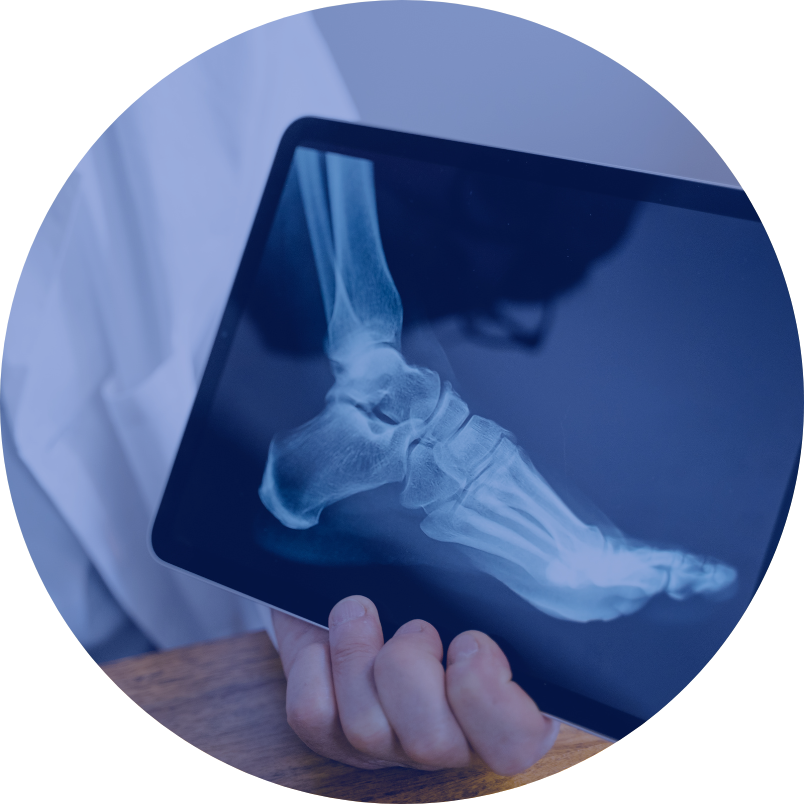X-ray and ultrasound



At our hospital, you can take advantage of ultrasound diagnostics with selected specialists, as well as X-rays.
What do you need to know about the X-ray examination?
This acronym stands for an important diagnostic examination that can rule out or confirm many conditions.
X-rays are rightly associated primarily with pictures of injuries and fractures of limbs. However, it has found much wider use in medicine. When is an X-ray performed? What does the examination consist of? How to prepare for it properly? Are there any contraindications? The answers to all these questions can be found in the material we have prepared.
What is an X-ray examination?
X-ray is an imaging technique that allows the detection of changes inside the body. It is performed most often to examine the skeletal, digestive and respiratory systems. It serves both prevention and diagnosis. X-rays can diagnose fracture, dislocation, degeneration, osteoporosis, tuberculosis, pneumonia or cancerous lesions, among others. It also serves as the first stage in preparation for root canal treatment of the tooth.
What does the X-ray consist of?
The examination consists of using ionizing radiation by the doctor to expose the examined area of the patient’s body – the rays penetrate partially through the body and fall on a special X-ray-sensitive photographic film – a two-dimensional image is formed.
The photo is in the colors of white, gray and black. This is because different tissues absorb a different amount of radiation. The denser the tissues, the lighter they will be on the photo – like bones.
Is the X-ray examination safe?
Patients often ask doctors if the X-ray examination is safe. After all, it uses ionizing radiation, and large and frequent doses of it are harmful to the body. On the other hand, it is important to remember that the radiation dose during X-ray is small – similar to the daily amount of radiation humans are exposed to from cosmic radiation. Thus, it poses no risk to the patient.
X-ray – contraindications.
X-ray examinations for pregnant women are performed with special precautions. This is due to the fact that X-rays are very harmful at the stage of intensive fetal cell division. Between 3 and 8 weeks of pregnancy, radiation can even lead to birth defects. Therefore, during pregnancy, the decision to perform an X-ray is made on an individual basis – taking into account the health of the patient and the baby.
Should I then prepare to an X-ray examination?
X-ray examination does not generally require any particular preparation. Be sure to bring your ID card, referral and previous medical records with you to the appointment. On the other hand, there are types of X-ray examination for which you should prepare in advance. This is true for an X-ray of the abdomen and lower spine, for example, because in this area of the body gases in the intestines can affect the clarity of the X-ray taken.
For abdominal and lower spine X-rays, remember to:
- maintain an easy-to-digest diet and take an over-the-counter antiflatulent – the day before the examination,
- remain fasting – on the examination day.
With your health in mind.
Remember, every examination recommended by your doctor is dictated by concern for your health as well as your life. Performing an X-ray in most cases is non-invasive and helps identify possible developing disease.
If you have any concerns about the safety of performing an X-ray in your case, consult a specialist.
Please note that:
Radiation protection – human health and environmental protection notice
The operations involving exposure to ionizing radiation at ORTHOS Multispecialty Hospital, which consist of providing X-ray diagnostic services, have not had a negative impact on human health or the environment in the past 12 months.
No radioactive substances are released into the environment in connection with operations. Over the past 12 months, there have been no exceedances of the dose limits set for workers. Dosimetric measurements of the distribution of dose power of ionizing radiation around the instruments confirm that the construction of walls, ceilings, windows, doors and installed protective devices protect staff, people from the general population residing in the area and in the vicinity of the hospital, as well as people from the general population.
Legal basis: Article 32c paragraph 2 of the Act of May 26, 2022 (i.e.: OJ of 2021, item 1941)
Komorowice 25.01.2023

